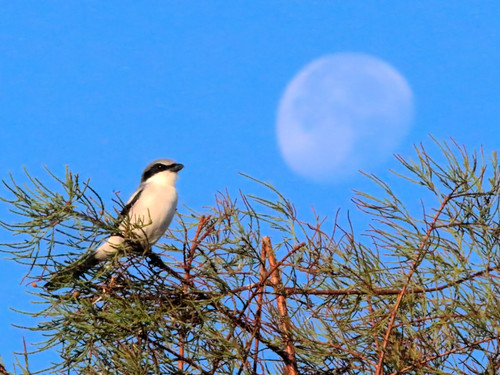
A murky morning on the local wetlands:
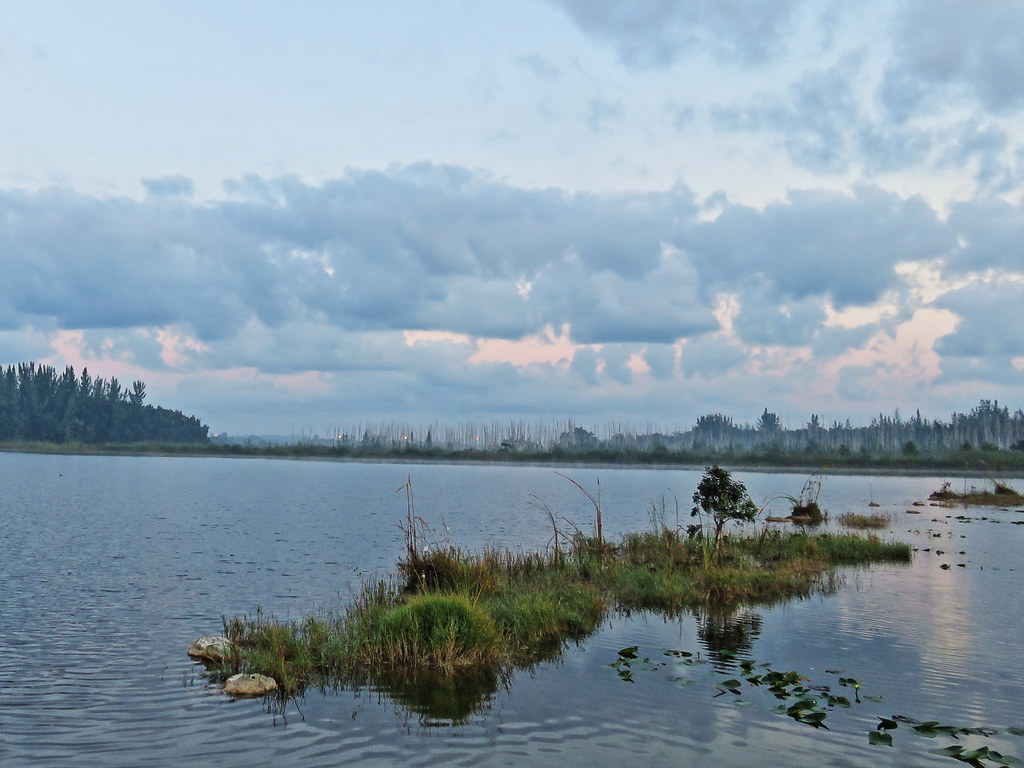
Around the world there are thirty shrike species, but the Loggerhead Shrike is the only whose range is limited to North America.
The population of this species has declined dramatically since the mid-Twentieth Century, believed to be attributable to human alteration of habitat such as elimination of fence rows in its favored open pastures and their replacement by cropland. Other factors may include the effects of pesticides, strip mining and expanded dense urbanization. It is listed as threatened or endangered in several Midwestern States.
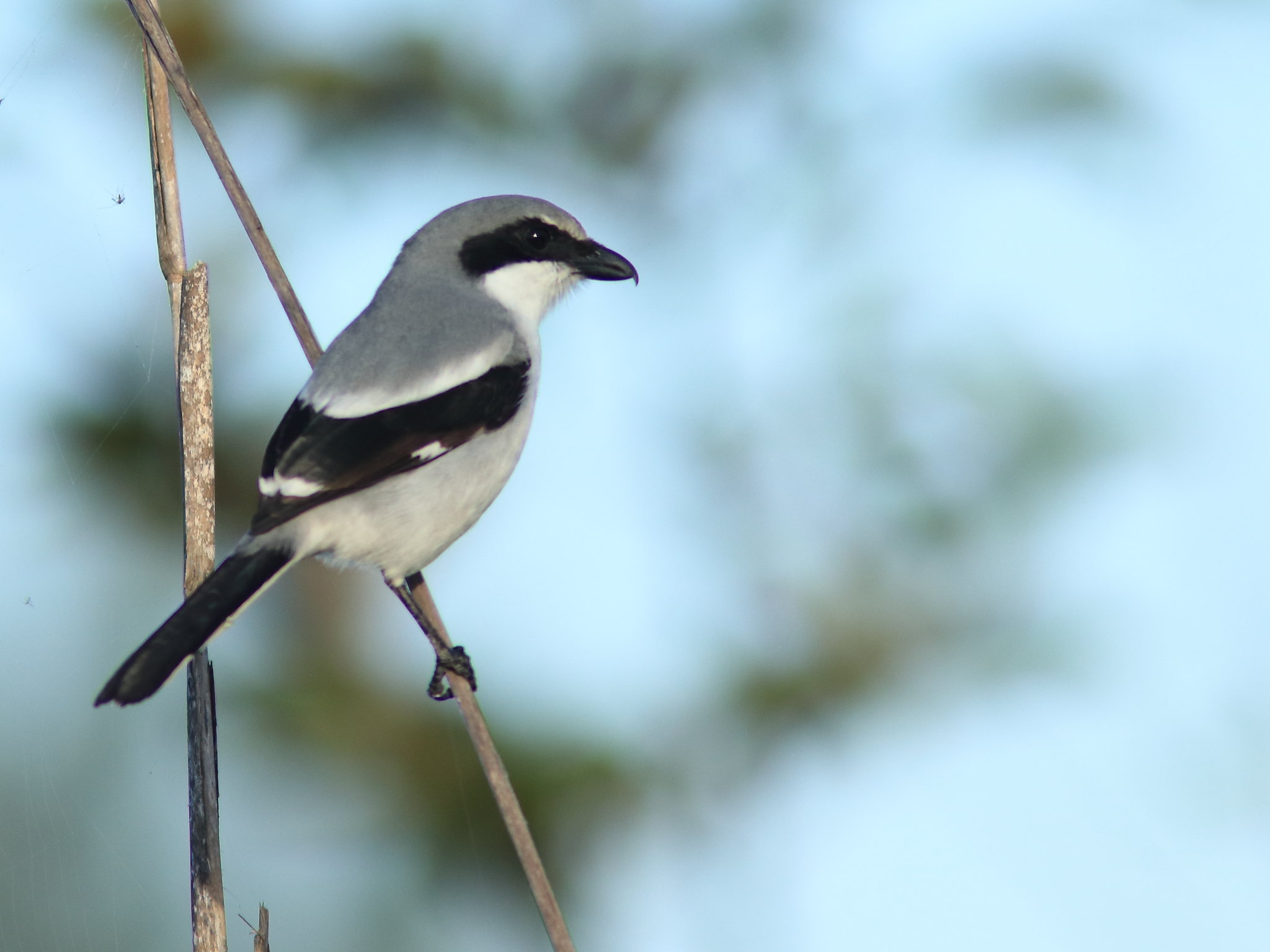

The hooked beak and striking plumage pattern of the Loggerhead Shrike make the little bird look fierce indeed.
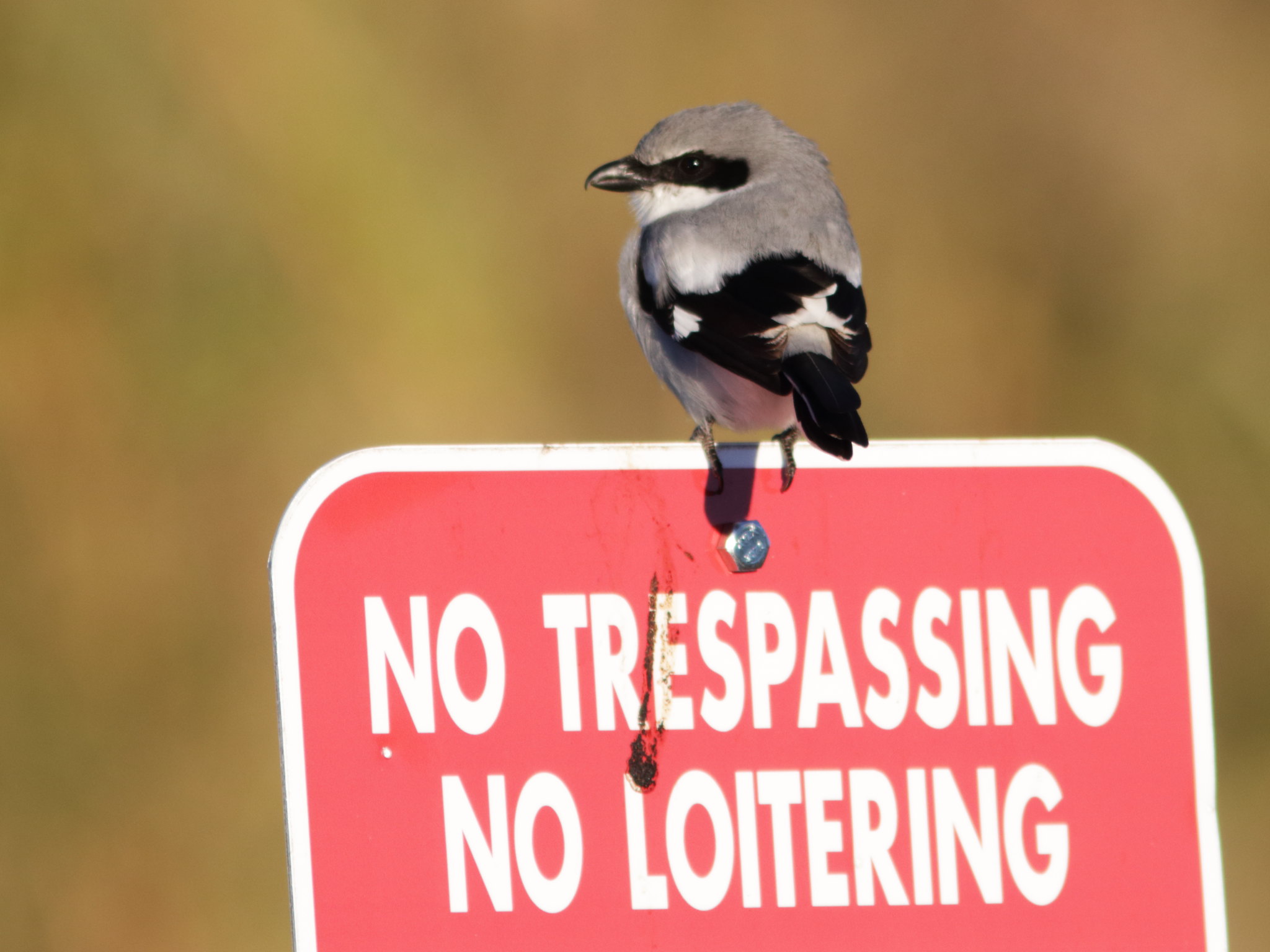
When I was about 10 or 11 years old (before I started my Birding Life List at the age of 13), while walking in the river bottoms near my home in New Jersey, I came across a barbed wire fence which had a mouse and several grasshoppers impaled on the spikes. I already knew from my reading that this is a practice of shrikes. It allows them to secure and tear prey despite their lack of talons. I returned to look for the shrike and finally saw it.
Here in south Florida, as in the southern half of the contiguous 48 States, it is found all year around. It also breeds up through the western central US into Canada, but migrates south in winter.
A courting pair:
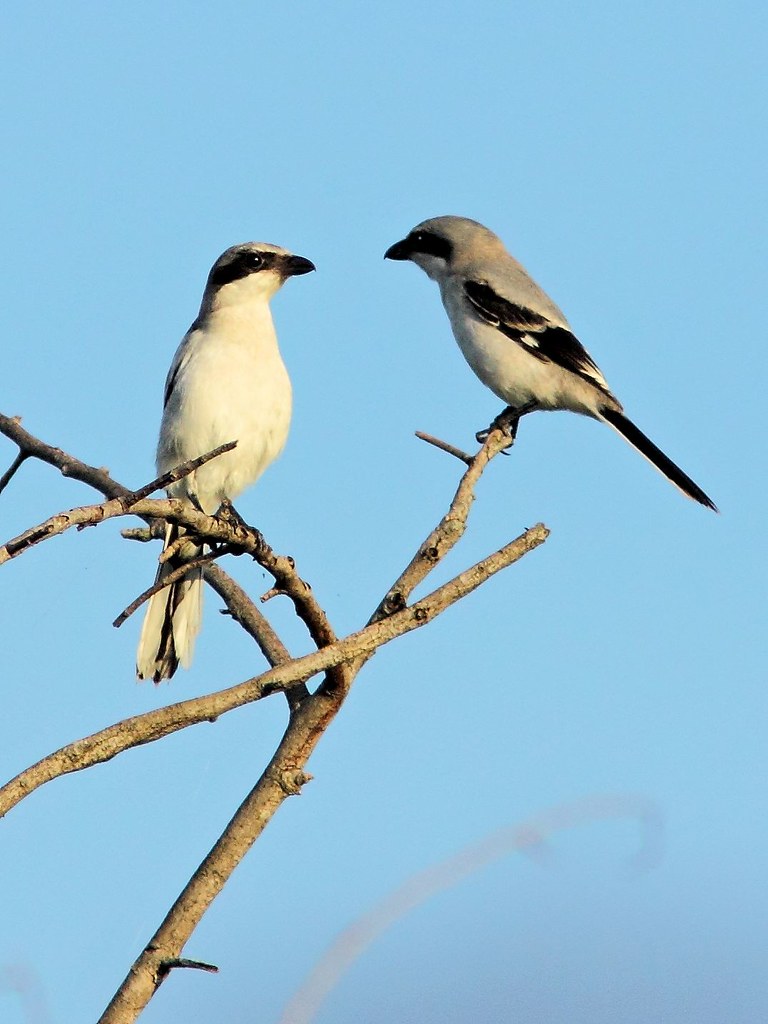
I usually see one or a few on my daily morning walks, and they often forage in our suburban neighborhood.
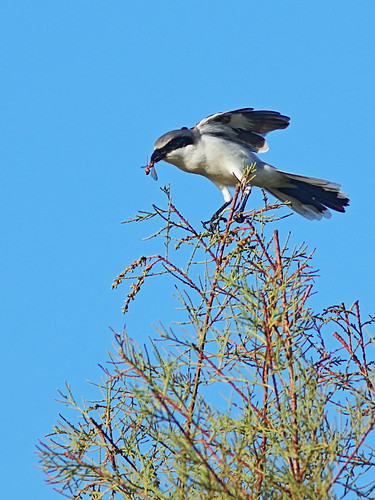
A few times over the years a shrike would fly down and pick up a prey item near where I was standing. The large grub in the second photo below is probably the larva of a Horsefly:

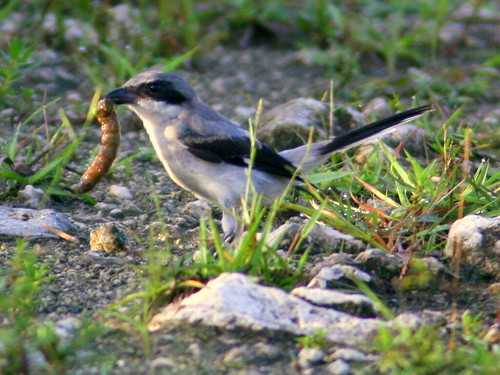
I thought this to be a random occurrence until one day while walking along the path I noticed that, after it plucked an insect near me, it continued to follow me along, flying from one perch to the next. Once again, it flew down behind me and seized an elongated prey item. I was not sure whether it was an insect or a small lizard or snake.
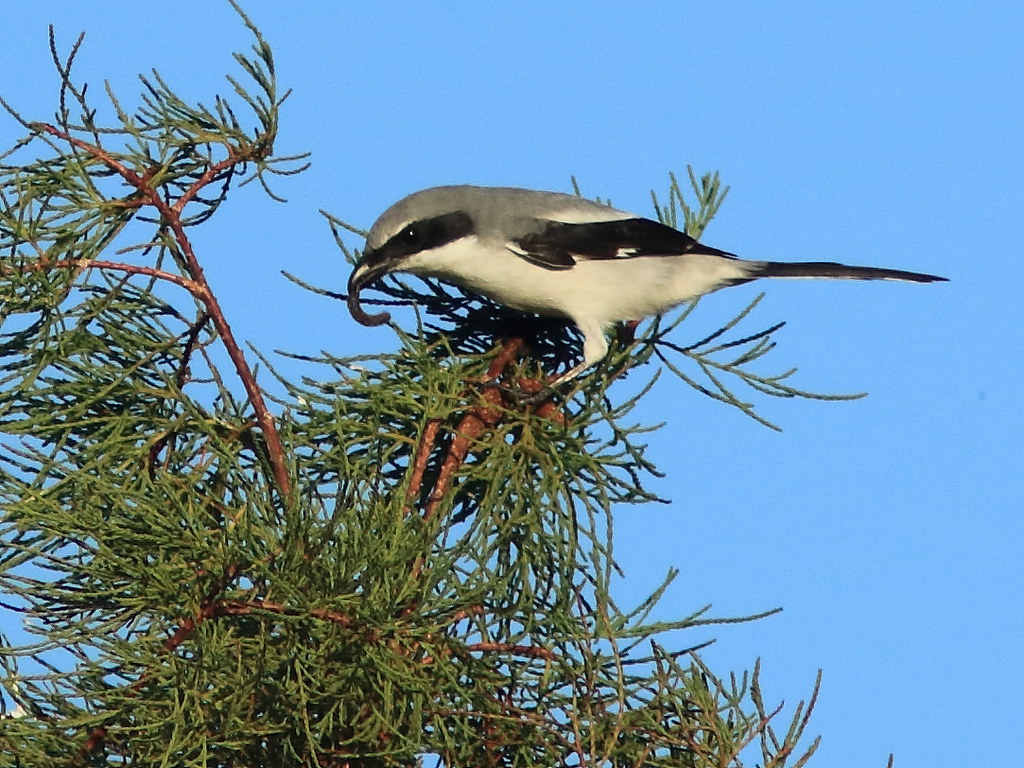
The shrike likely learned that my walking along the path often frightened some grasshopper or other creature out into the open. When I lived in Dallas the mockingbirds often followed me as I mowed the lawn, surely for the same reason. Similarly, gulls follow boats, and inland, the plow.
I watched for this behavior and it was repeated by the shrikes on other occasions. The shrike sometimes moved along behind me for several yards but I did not see it fly down. Once a shrike picked up a butterfly which flew up from my feet and landed several yards away. It was a Gulf Fritillary, and I photographed it. Just as I lowered the camera the shrike snatched it and flew into a nearby bush. A missed photo-op!
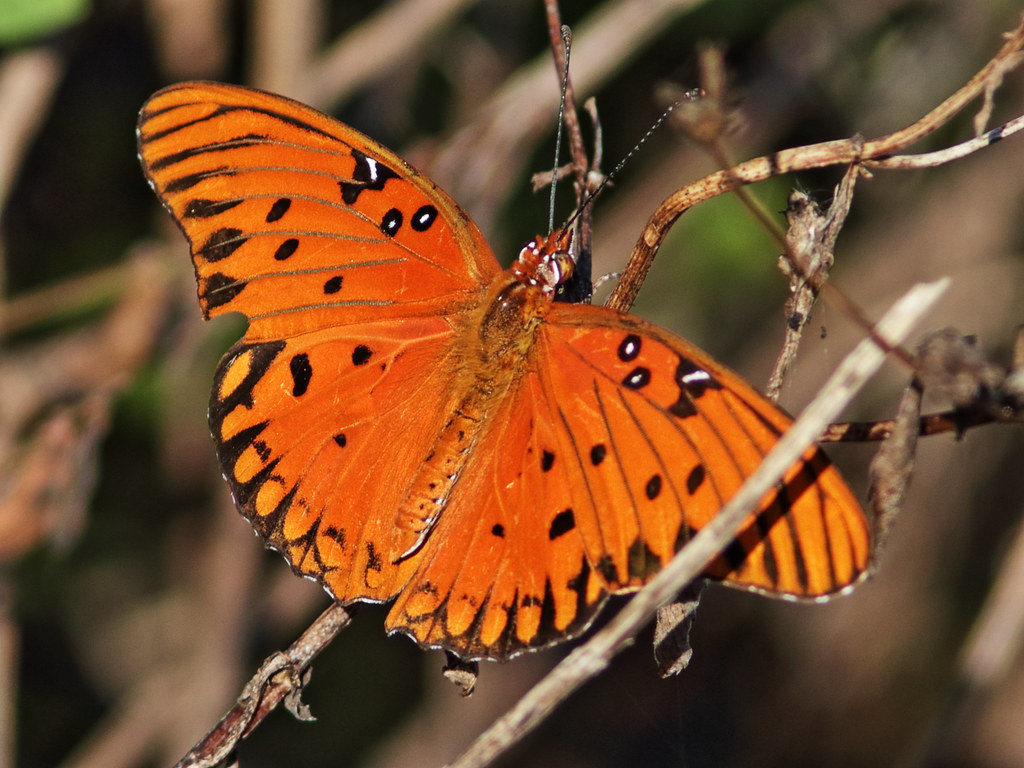
It seemed to take a bite and then immediately dropped the butterfly. It must have tasted horrible, as it shook its head and cleaned its bill.
This observation led me to research the dietary habits of Loggerhead Shrikes and discover that they may impale prey which contain toxins, such as the Monarch butterfly, leaving them for 3 or more days and then "...consuming them afterward, presumably after poisons have degraded... In addition, regularly impales lubber grasshoppers (Romalea guttata) in peninsular Florida for 1–2 days, and then feeds on head and abdomen, discarding thorax which contains poison glands" REF: Birds of North America, Cornell Laboratory of Ornithology [Subscription required].
It is not clear whether this behavior is innate or learned from unpleasant experiences such as the episode which I witnessed. Indeed, larvae of the Gulf Fritillary accumulate toxins from host plants such as passion vine or manufacture them in their own bodies. Adult butterflies also release noxious chemicals from glands in their abdomen when disturbed, to deter predators such as birds. REF: Beautiful but stinky: Gulf Fritillary
= = = = = = = = = = = = = = =
Linking to Misty's CAMERA CRITTERS,
Linking to Eileen's SATURDAY'S CRITTERS,
Linking to SKYWATCH FRIDAY by Yogi, Sylvia and Sandy
Linking to WEEKEND REFLECTIONS by James
Linking to BirdD'Pot by Anni
Linking to Our World Tuesday by Lady Fi
Linking to Wild Bird Wednesday by Stewart
Linking to Wordless Wednesday (on Tuesday) by NC Sue
Linking to ALL SEASONS by Jesh
________________________________________________
Please visit the links to all these memes to see some excellent photos on display
________________________________________________
Your shots knocked it out of the park today.
ReplyDeleteI remember in my youth being entertained by the blackbirds following the hay swather.
Very interesting post indeed! I like this little bird very much, I call him Zorro, because of the dark mask on his eyes!! I have photographed the variety of the species who lives in Finland. (Post to follow).
ReplyDeleteI admire your knowledge/passion for the avian world.
ReplyDeleteI love your opening shot... a perfectly composed photo!!
ReplyDeleteThe Loggerhead Shrike is now very rare here in Ontario. But I do remember seeing prey of a shrike stuck on a Hawthorn spike when I was a young birdwatcher.
ReplyDeleteAll your photos are beautiful but I especially love the first one. Have a wonderful weekend.
ReplyDeletePretty bird and interesting information!
ReplyDeleteI have not seen any Shrikes here in Mississippi, but now that I know more about them, I will be looking for them
Have a wonderful day!
Beautiful shots! The top one is my favorite.
ReplyDeleteAlmost forgot. From your comment last week. " I cannot figure out where the "845" band across the screamer's face came from."
It's a reflection of a restaurant across the street called Civico 1845. Only part of the name was visible. I had lunch there after I took the photo. Yum! :-)
Wonderful photos, thanks for sharing :)
ReplyDeleteAbsolutely fascinating details about these beautiful birds, Kenneth! Our acreage seems to be the perfect habitat for them. I've never seen one here but there is always hope! Thank you for sharing!
ReplyDeleteHello, awesome series on the Shrikes. I love the first shot with the Shrike and moon. Great post and photos. Thank you for linking up and sharing your post. Happy Saturday, enjoy your weekend.
ReplyDeletebig smile on that loitering
ReplyDeleteBeautiful photos of our feathered friends ~ awesome butterfly shot!
ReplyDeleteHappy Weekend to you,
A ShutterBug Explores,
aka (A Creative Harbor)
Shrikes are mighty interesting, thanks for sharing the info. They're clever and shrewd. No wonder that shrike didn't pay attention to the sign.
ReplyDeleteGorgeous landscapes and birds.
ReplyDeleteAgree with you about the decline in certain species when their habitat changes so drastically - it's a sad fact caused by people invading and changing their environment. Wow, you have a long history of birding! Is that when kids start birding? (am such a city person, I have no one in my circle of friends who birds!) Awesome capture of the waning supermoon! Have a lovely week:)
ReplyDeleteI've never seen a loggerhead shrike. Their appearance is quite striking - I'm sure I would have noticed such a distinctive bird!
ReplyDeleteThanks for linking up at https://image-in-ing.blogspot.com/2018/01/fun-with-textures-in-photoshop.html
It warms my heart to see a bird eating a grub - tell me the shrike also eats slugs!!! A very striking bird, and how terrific that you also caught a pair! Clever of you to ascertain the bird was following you ... Thanks for these captures!
ReplyDeleteThat first photo is so cool with the moon in the background. Lovely photos!
ReplyDeletehttp://travelingbugwiththreeboys-kelleyn.blogspot.de/
Great shots. We have an eclipse, super moon and blood moon due here tonight! Shame its a bit cloudy!! (and will happen well past my bed time!)
ReplyDeleteCheers - Stewart M - (back in) Melbourne
That's a wonderful shot with the waning moon in the background.
ReplyDeleteIt's a stunning bird! I loved reading about how the shrike inspired you as a child, and how you have found him out at times since.
ReplyDeleteMy first Loggerhead Shrike sighting was in December here in Oklahoma. There is one that sits on the electric line outside my kitchen window almost daily. He watches the grassy pasture below and often dives down to grab a snack. Makes me think of the way the hawks hunt.
ReplyDeleteSo interesting Ken. I ID's my first loggerhead shrike on our roadtrip a year ago -- I will watch for them here although we might not have too many around N Fort Myers, because the lubber grasshoppers definitely seem to thrive every spring! All of those feeding behaviors really seem like this bird should have a chapter in "The Genius of Birds" (a book I recently finished).....
ReplyDelete